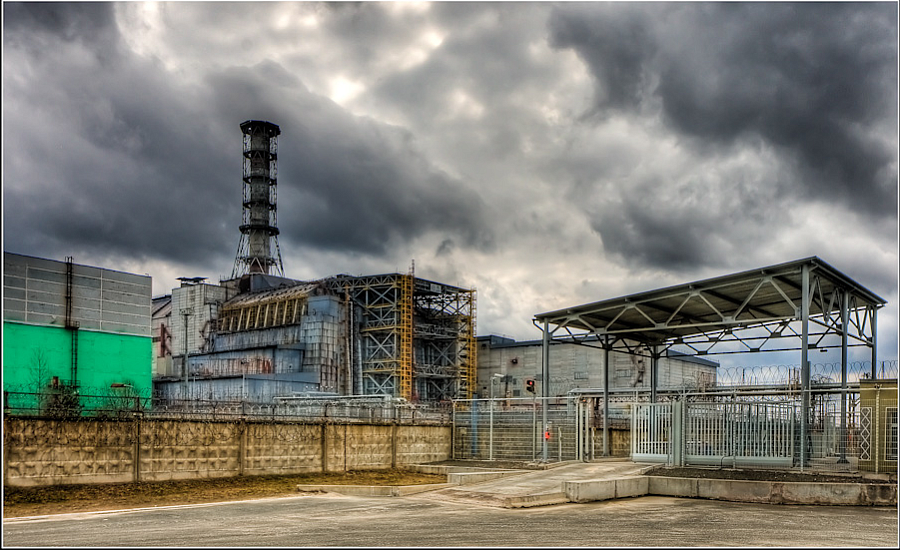Complete Health Reporting: Deflate Fearmongering by Demanding Details

What do the studies on similar previous disasters say? The Chernobyl reactor gate, above.
Reporters are not always the masters of their own calendars. They can arrive at work in the morning with plans to write a feature on hadouken only to be told moments after the morning editors meeting that they have to write about a new study claiming that radiation from the nuclear meltdown in Fukushima, Japan, is causing thyroid disorders in babies in the United States.
If this happens to you, what to do you do? Here are five steps to take every time a can-this-be-true claim hits your desk.
1) Read the study. Look for all the things that I’ve discussed before in the Complete Health Reporting series. Does the study differ from the press release? Can you quantify the risks of radiation or any other cause of harm being studied? Can you quantify the benefits of a proposed treatment? Is there a cost breakdown? Have the researchers claimed a novel aspect to the research and proven that claim? Do they have conflicts of interest? Can you find independent sources to either back up or dispute their claims? Is this an example of disease mongering?
One of the biggest red flags in the Fukushima study in the Open Journal of Pediatrics is that it is so hard to figure out what time period the authors are writing about. They jump around from “1970-1993” to “fall 2011” to “March 22 to April 12, 2011” to many other time spans. There is a table in the paper that appears to indicate that the researchers compared the period from March 15 to April 30 in 2010 and 2011 to the combination of two different periods in those same years: January 1 to March 14 and May 1 to October 4. They appear, too, to be compiling radiation measurements from certain sources – rain, seaweed and soil, for example – but ignoring radiation data from other sources – air, water, and milk.
2) Background the authors. Stories about the Fukushima study in Grist and other outlets made no mention of the authors’ long histories of opposition to nuclear power. The study’s lead author, Joseph Mangano, published a book last year called “Mad Science” that focused on, as the book’s website explains, “the near-smothering layers of distortions and outright lies that permeate the massive propaganda campaigns on behalf of nuclear energy.” I have no doubt that the nuclear power industry – like any big industry – has its share of distortions and even lies, but science should not start from a predetermined agenda.
3) Background the journal. I had never heard of the journal that published the Fukushima study before I started writing these posts. Nor had I heard of the journal’s publisher: Scientific Research Publishing or SCIRP. When I started looking into the group, though, I found that there is reason to be skeptical. Gina Kolata at The New York Times recently featured Jeffrey Beall, an activist librarian and researcher – at the University of Colorado Denver. He has created a list of “potential, possible, or probable predatory scholarly open-access publishers.” SCIRP is on the list. Improbable Research wrote in 2009 about SCIRP, saying that that it housed “what may be the world’s strangest collection of academic journals” and calling it “a shadowy entity,” because at the time there was no clear information about the company on its website. Since then, it appears to have added some details, now declaring that it has a “Place of Public Relation” at “P.O. Box 54821, Irvine, CA 92619-4821, USA” and a “Place of Customer Service: Building 5, Headquarters Space of Optical Valley, Tangxun Lake North Street 38#, East Lake High-Tech Development Zone, Wuhan 430223, Hubei Province, China.” A publishing company that spans from Orange County, Calif., to China? That may be a first.
4) Research analogs. The first question someone should have had when they saw this study was: Did any previous overseas nuclear meltdowns result in damaging biological effects to infants in the United States? The example that comes to mind, of course, is the Chernobyl disaster. As far as I know, there is not a single credible study that links a significant rise in thyroid disorders, let alone cancers, to radiation from Chernobyl floating from Ukraine to the United States. Yet Chernobyl is closer to the largest urban center on the East Coast of the United States – New York – than Japan is to Los Angeles on the West Coast. Here’s one overview study that focuses on the very real effects seen in Europe.
5) Write with caution. How’s this for an alternative lead to the one that MSN Healthy Living used? My edits are in bold.
It's already well known how devastating the March 2011 Fukushima nuclear reactor meltdown was for Japan – dramatic spikes in radiation-related illnesses, an increase in likely cancer deaths over the next several years, and pollution which may never truly be cleaned up.
But parents in the United States may have been frightened recently by what appeared to be a legitimate study showing health effects in babies from Fukushima radiation.
The anti-nuclear activist organization behind the study, which was published in an obscure journal, has drawn criticism in the past for making unsupported claims about health effects from the Fukushima radiation. No credible health agency or medical association has made any connection between radiation traveling more than 5,000 miles from Japan to the West Coast of the United States and health effects in babies born in the United States.
Do you have enough to worry about without scientific journals trying to scare you? Join our discussion on Facebook.
Have your own thoughts on whether to take this research seriously? Ping me on Twitter @wheisel or via email at askantidote@gmail.com.
Photo by Timm Suess via Flickr.
